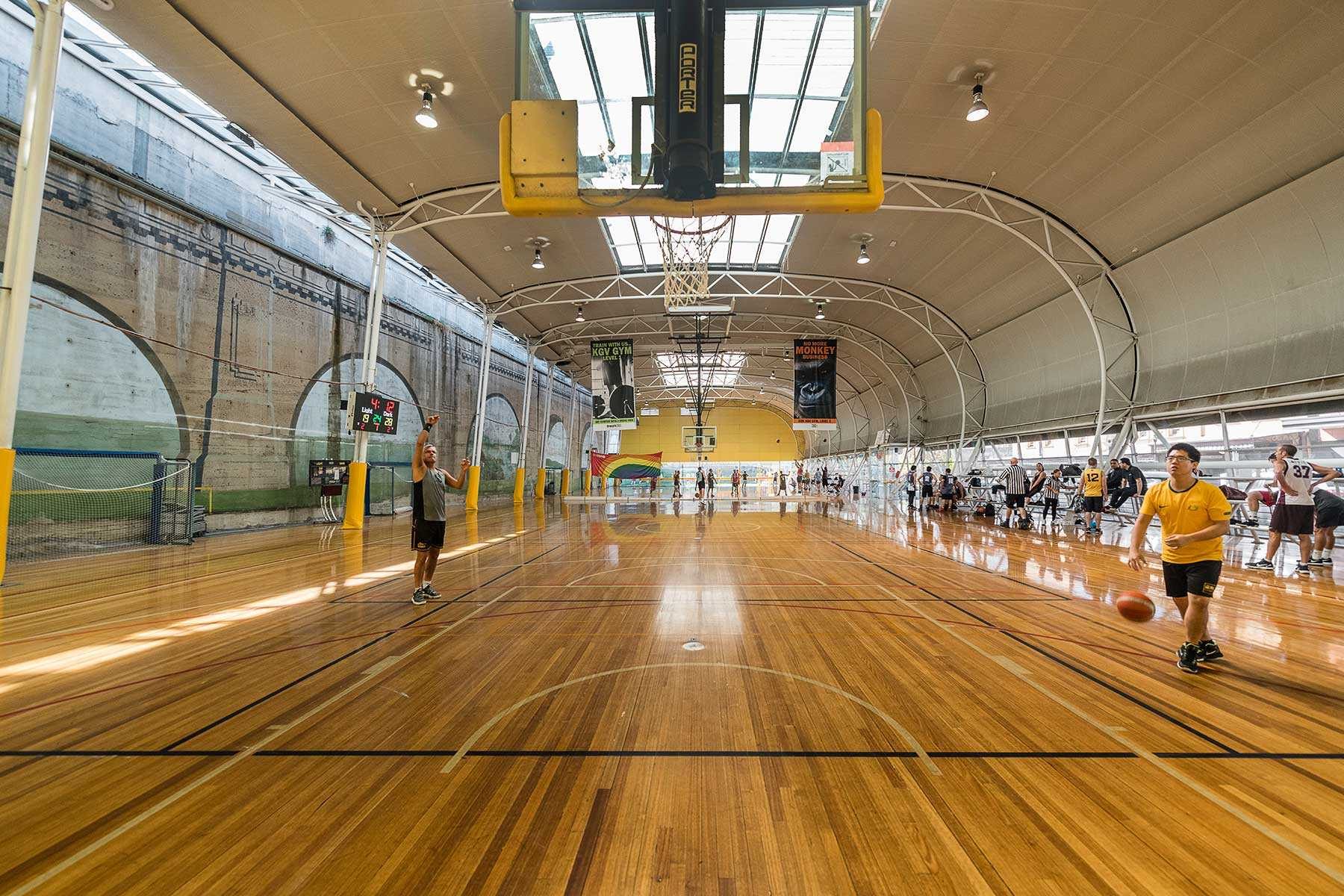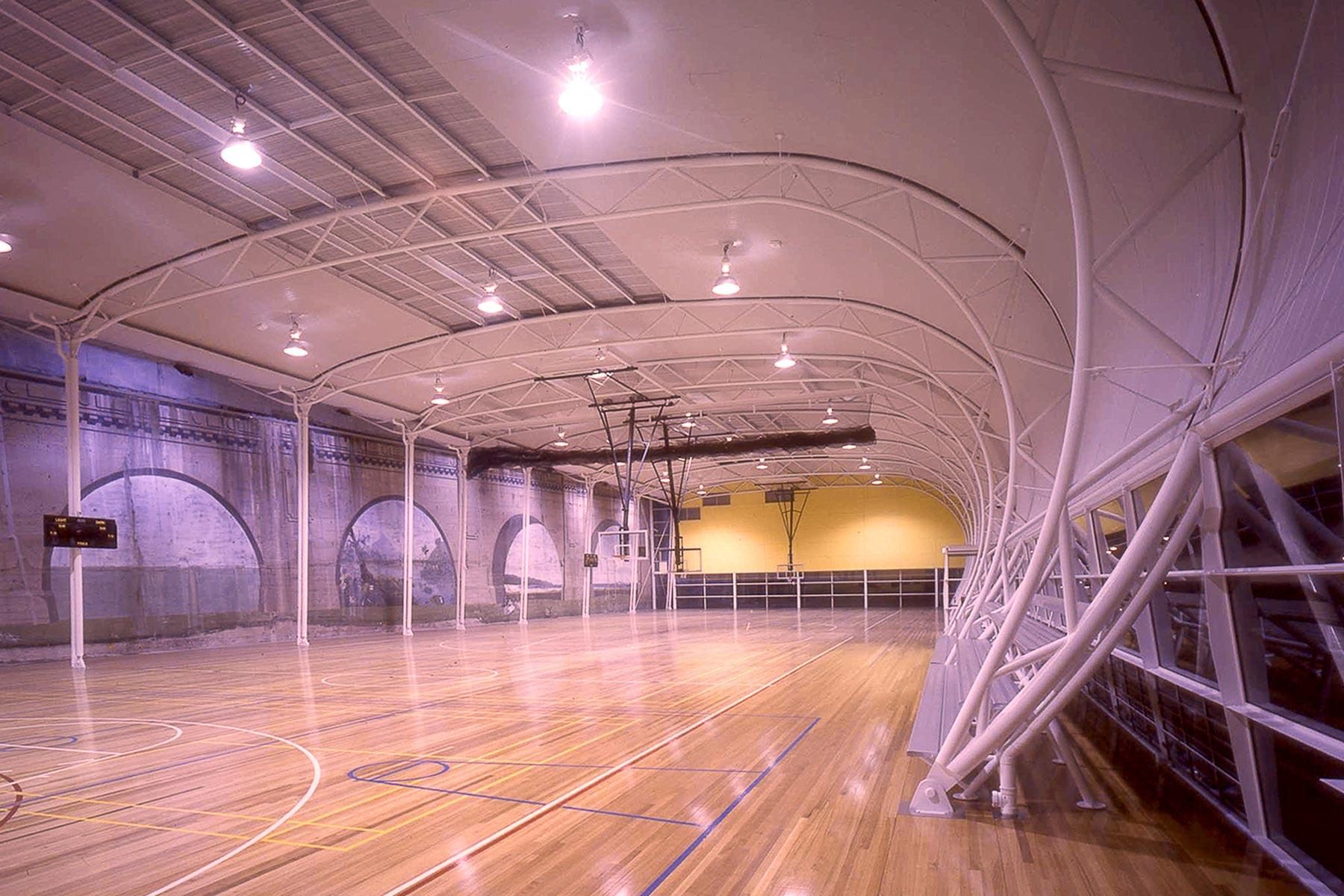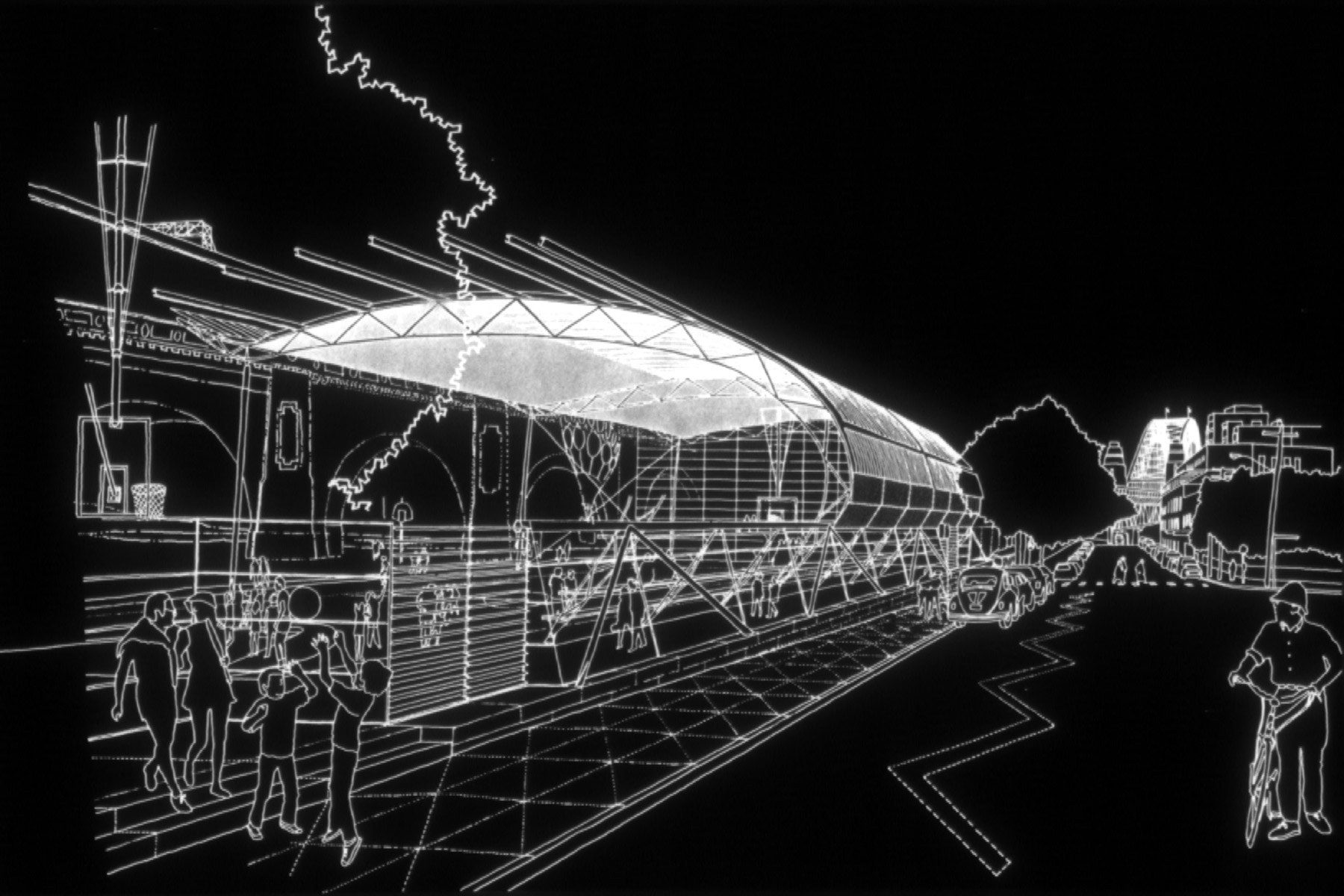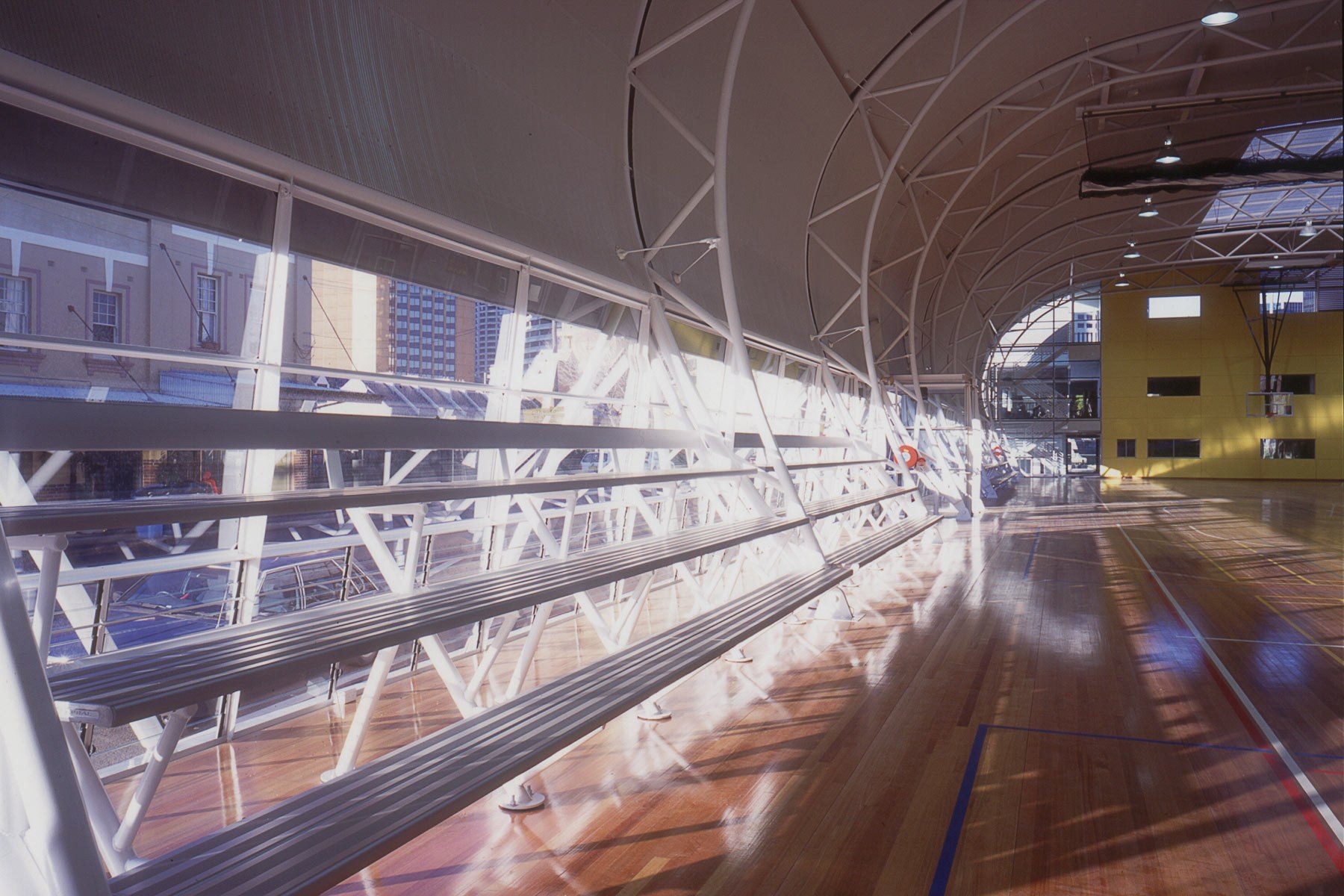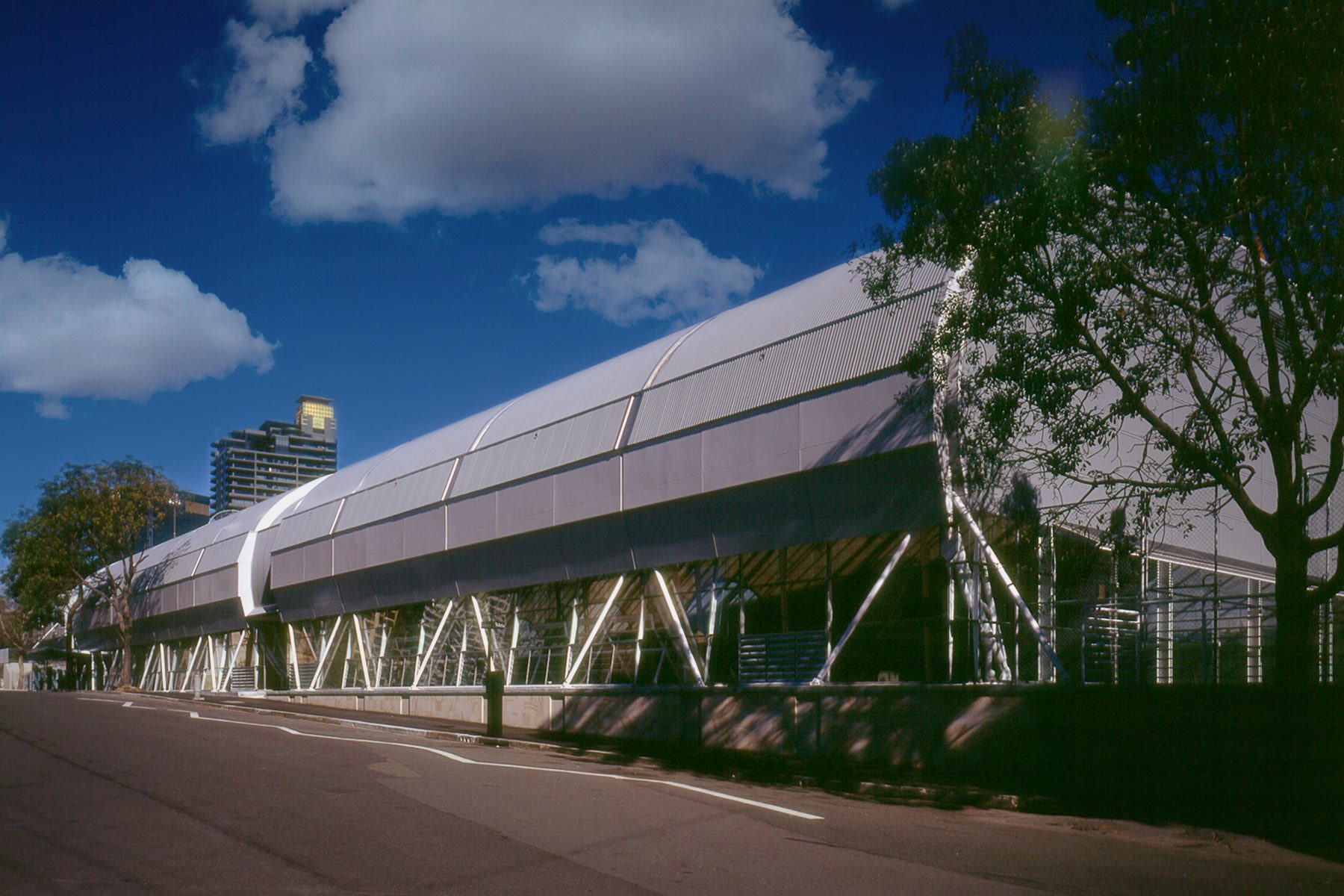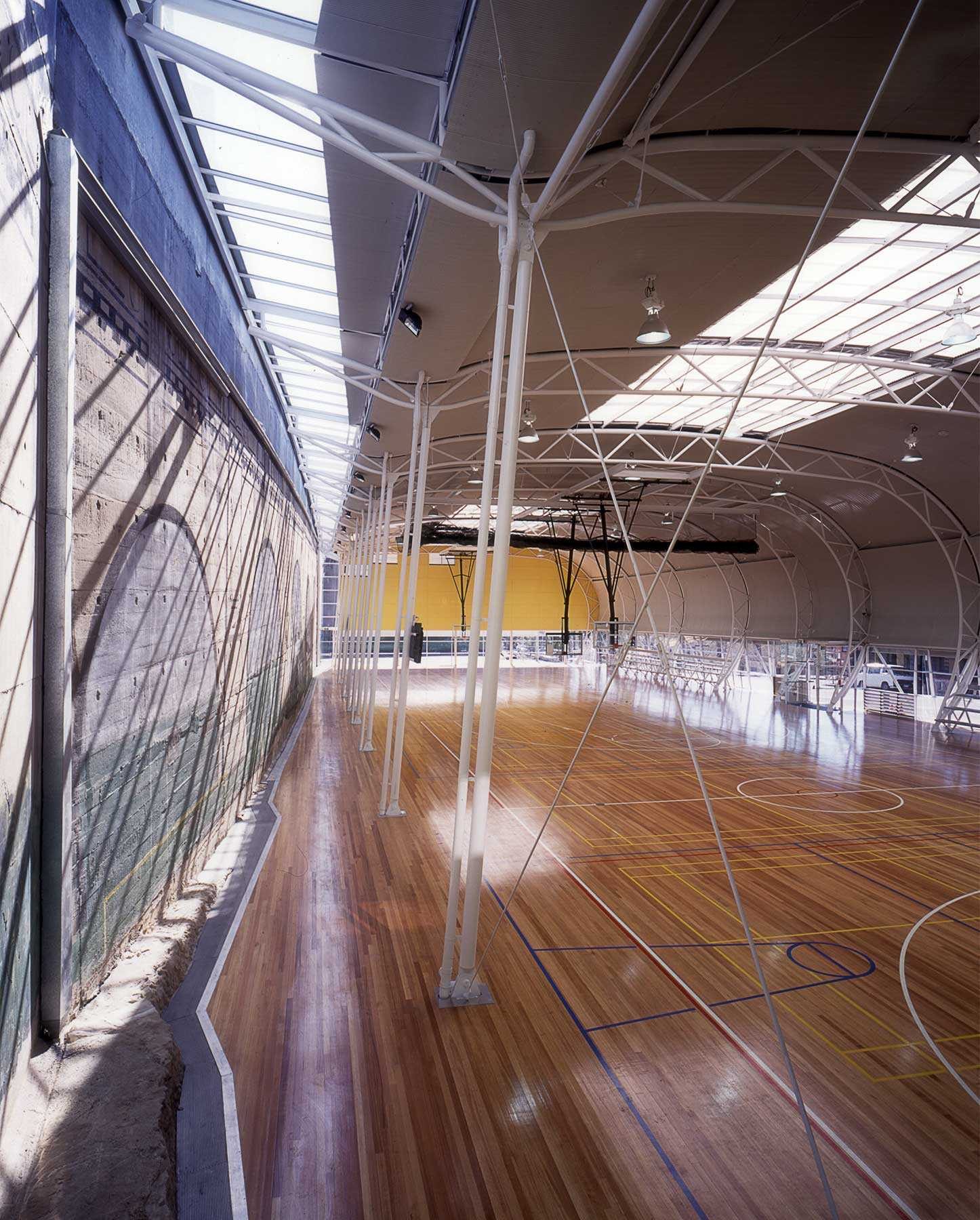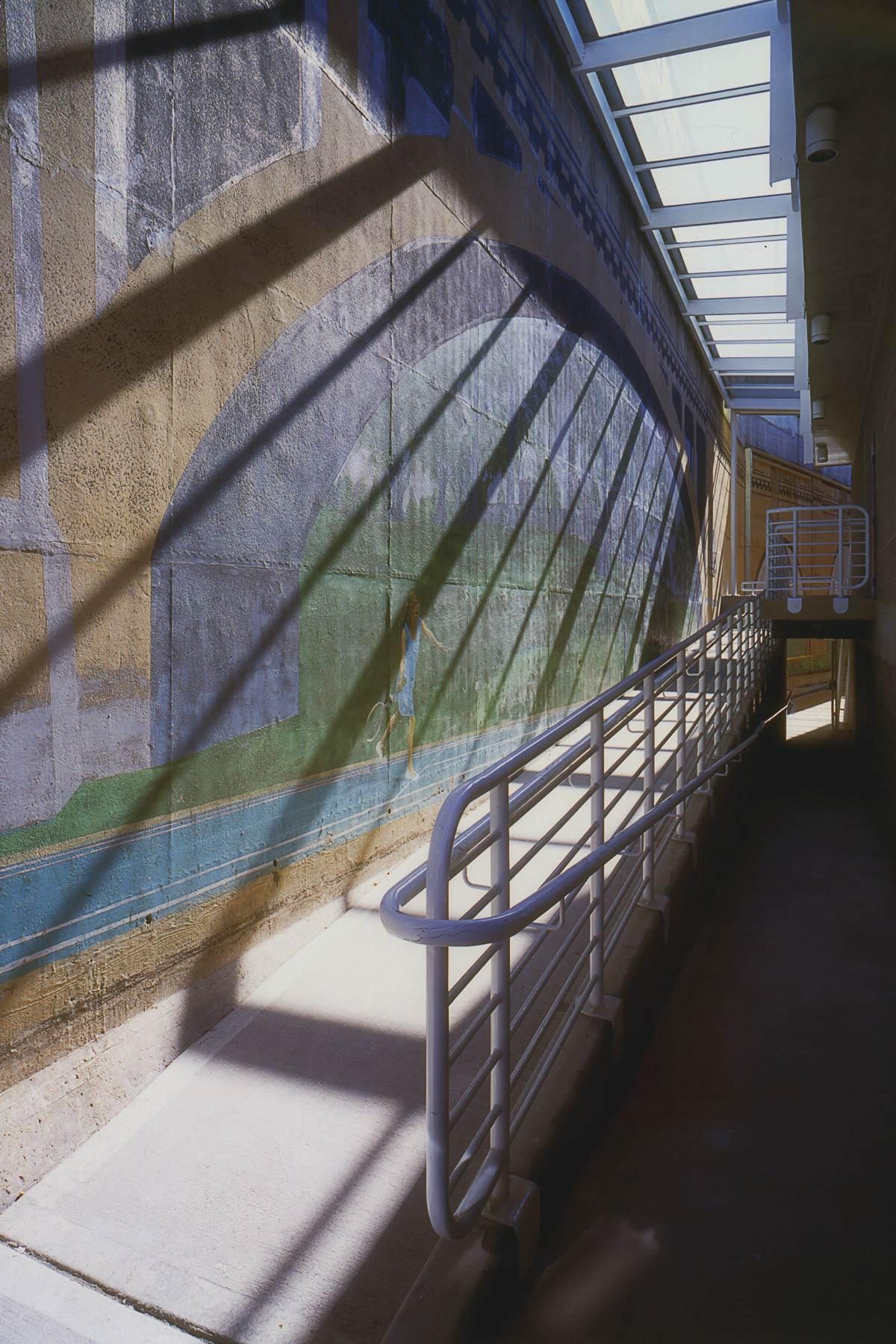The Rocks is one of the most significant heritage precincts in Sydney, with many intact buildings and streetscapes dating back to European settlement in the eighteenth century.
Few contemporary buildings can be found here. However, there is one building, located at 15 Cumberland Street that continues to slow traffic along the Cahill Expressway where it’s located. The Sydney City Council brief, required replacement of a dilapidated outdoor facility: two outdoor bitumen courts and a crude storage/reception building, with a new recreation centre for the local community and city workers. The brief for the replacement indoor facility was for two multi-functional courts suitable for netball, basketball or volley ball, together with a gymnasium, community room and childcare facilities.
One of the key requirements from the City of Sydney was that the treasured mural painted on the wall of the Cahill Expressway by artist Peter Day in 1983 had to be protected. And not just protected, but the brief required the trompe l’oeil mural with distinctive arches and Sydney Harbour scenes to be visible to passers-by on Cumberland Street! “A very tall order” as Lippmann recalls. The other stipulation was that the roof of the new structure could not block views from the Cahill Expressway above, while still allowing sufficient clearance above the new courts (up to 9 metres in height). So, to the west the views had to be maintained as well as those to the east, with people still able to see Day’s mural.
